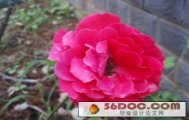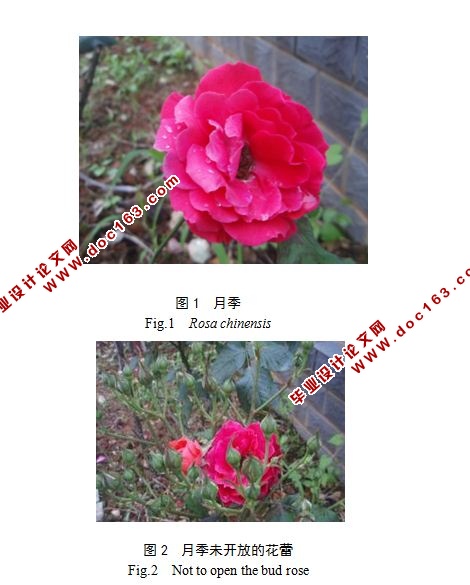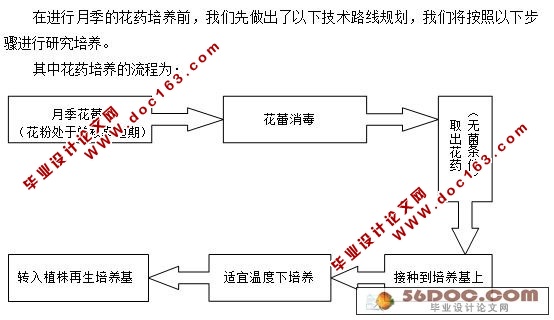月季的花药培养(Rose Anther Culture)

月季的花药培养 Rose Anther Culture
摘 要:研究月季花药培养是为了培养出单倍体植株,用以基因组测序和功能基因组的研究。实验以月季的花药为材料进行培养,用同样的MS培养基做两组,一组是花粉处于单核靠边期的花药,一组为花粉不处于单核靠边期的花药。按照花药培养的一般程序,将材料放入4种不同激素配比的培养基中进行对比培养。实验结果表明,花粉处于单核靠边期的花药最容易形成愈伤组织;由于花瓣的包被,对花蕾不进行消毒处理也不会对实验结果有明显影响;激素配比为NAA 0.1 + 6-BA 0.5的培养基中形成遇上组织的诱导率最高,生长激素浓度过高或者过低都会抑制花粉的发育。
关键词:月季;花药培养;单倍体
Rose Anther Culture
Abstract: The rose is anther culture research in order to produce haploid plants, which are genome sequencing and functional qenomics research. In the experiment for materials rose anther, using the same medium plus two groups, one group is pollen in the period of anther side monocytes, one group of pollen is not in the period of anther side mononuclear. According to the general procedure for anther culture, material into four different hormone ratio compares the medium. Experimental results show that the pollen in the side of anther monocytes callus formation is the most easy. Because of the petals of bud, undertake alexipharmic handling will not have obvious influence on the experiment results. Hormone ratio for 0.1 + 6 - BA 0.5 medium, the highest rate in tissue induced, growth hormone concentration is too high or too low can inhibit pollen development. [资料来源:https://www.doc163.com]
Key words: rose; anther culture; haploid [资料来源:Doc163.com]


目 录 6000字
摘要……………………………………………………………………………1
关键词…………………………………………………………………………1 [资料来源:http://doc163.com]
1前言………………………………………………………………………………1
2文献综述……………………………………………………………………………2
2.1月季花药的研究概况………………………………………………………2
2.2单倍体……………………………………………………………………2
2.3技术路线……………………………………………………………………3 [来源:http://www.doc163.com]
3材料与方法…………………………………………………………………………3
3.1材料……………………………………………………………………2
3.1.1材料的选取 ………………………………………………………3
3.1.2材料的消毒 ………………………………………………………3
3.2方法…………………………………………………………………………4 [来源:http://www.doc163.com]
3.2.1培养基的配制及灭菌…………………………………………4
3.2.2接种和培养…………………………………………………………4
4结果与分析…………………………………………………………………5
4.1 花粉发育时期对花药培养的影响……………………………………5
4.2 不同的材料消毒方式对实验污染的影响……………………………5
4.3不同浓度的生长激素对愈伤组织诱导的影响……………………5
[资料来源:www.doc163.com]
4.4褐变的产生…………………………………………………………5
4.5培养条件的影响…………………………………………………5
5结论……………………………………………………………………………6
参考文献……………………………………………………………………………7
致谢…………………………………………………………………………………8
[来源:http://www.doc163.com]
附录………………………………………………………………………………9
[版权所有:http://DOC163.com]
